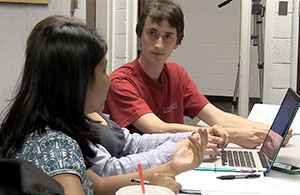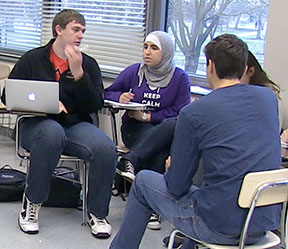Whether you're wondering what the "flipped classroom" conversation is all about, or you've been flipping your own classes for years, you'll find helpful resources on our new pages on "Flipping Your Class."
 The most common definition of a flipped class is one in which conventionally out-of-class activities are swapped with conventionally in-class activities. In many courses, a traditional model involves content-delivery during lecture followed by student practice at home. In a flipped model, students are introduced to course content before class, and classroom instruction time is used to guide students through the kinds of practice and skill-building opportunities that traditionally were assigned as homework.
The most common definition of a flipped class is one in which conventionally out-of-class activities are swapped with conventionally in-class activities. In many courses, a traditional model involves content-delivery during lecture followed by student practice at home. In a flipped model, students are introduced to course content before class, and classroom instruction time is used to guide students through the kinds of practice and skill-building opportunities that traditionally were assigned as homework.
Our new pages are focused on helping you determine what such a shift--which, depending on your current practice, might be subtle or radical--might look like in your classes. And we emphasize that flipping can make great use or no use at all of instructional technologies. Key topics these pages focus on include:
- Ideas and tools for introducing course content before a class meeting
- Methods for ensuring accountability, so students are prepared to engage actively with course concepts and skills when they arri
 ve
ve - Strategies for integrating active learning into your classes, including ways to make sure all students are fully involved in collaborative activities
- Examples of U-M faculty in a range of disciplines who have energized their teaching by flipping their classes.
We also answer some commonly-asked questions about flipping. As always, if you have additional questions that aren't answered on these webpages, you are welcome to schedule a consultation with a member of the CRLT staff.
- Log in to post comments
- 13 views






